Transform Your Classroom with AI-Powered Mind Maps: A Teacher’s Guide
Welcome to the future of classroom learning! In today’s rapidly evolving educational landscape, educators are constantly seeking innovative tools to captivate their students’ imaginations. Introducing Lumos StepUp Mind Maps enhanced by AI – a revolutionary solution poised to transform your teaching approach and inspire a newfound passion for learning in your students!
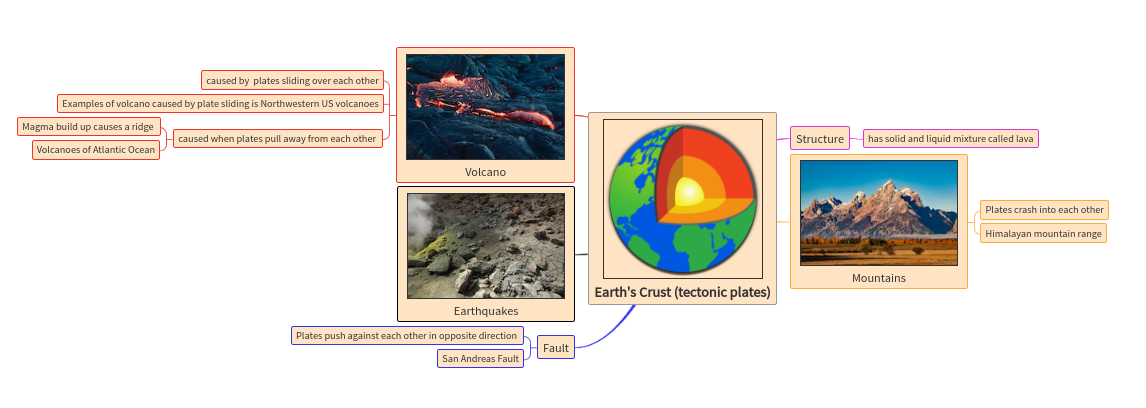
Table of contents
What are the benefits of using Mind Maps in the classroom?
What are the applications of Mind Mapping in the classroom?
How to create AI-powered mind maps with Lumos StepUp?
What are Mind Maps?
Mind maps are visual representations of ideas, concepts, or information, organized around a central theme or topic. They typically feature branches radiating outwards from the central idea, connecting related concepts and subtopics with lines or branches.
Mind maps are often used to brainstorm, organize thoughts, plan projects, and facilitate learning and understanding of complex topics. They offer a holistic view of a subject, allowing your students to see connections and relationships between different ideas.
What are the benefits of using Mind Maps in the classroom?
Using mind maps in the classroom offers numerous benefits for both educators and students:
- Enhanced comprehension: Mind maps provide a visual representation of information, making it easier for students to understand complex concepts and relationships.
- Improved memory retention: The visual and spatial organization of mind maps helps students retain information more effectively compared to traditional note-taking methods.
- Promotes creativity: Mind maps encourage creative thinking and brainstorming, allowing students to explore ideas freely and make connections between different concepts.
- Facilitates collaboration: Mind maps can be used collaboratively, promoting teamwork and communication among students as they work together to create and share ideas.
- Effective study tool: Mind maps serve as effective study aids, helping students review and revise information in a structured and organized manner.
What are the applications of Mind Mapping in the classroom?
Mind mapping is a versatile tool that can be utilized across various subjects and grade levels to enhance classroom learning.
Let’s explore some grade-appropriate examples of how mind mapping can be effectively integrated into math and English language arts (ELA) instruction for students in grades 3-8:
Math:
Problem-solving: Mind maps can be used to explore different problem-solving strategies in math. For example, students can create branches for strategies such as using arrays, repeated addition, or breaking numbers apart to visually represent each method and its applications.
Math concepts: In geometry units, mind maps can help students organize key geometric concepts, such as types of polygons, angles, and geometric transformations. Students can create branches for definitions, examples, and properties of each concept, aiding their understanding of geometric relationships.
Math vocabulary: Mind maps are effective tools for reviewing and reinforcing math vocabulary words. Students can create branches for different mathematical terms, including definitions, examples, and illustrations to aid in vocabulary retention.
English Language Arts (ELA):
Story elements: Mind maps can assist students in analyzing story elements, such as characters, setting, plot, and theme. By creating branches for each element and including details like character descriptions and key plot events, students can deepen their understanding of narrative structure.
Literary devices: In poetry units, mind maps can help students explore literary devices used in poems, such as similes, metaphors, and personification. Students can create branches for each literary device, including examples from poems they’ve read, facilitating their analysis of poetic techniques.
Writing process: Mind maps are valuable tools for brainstorming and organizing ideas during the writing process. Students can create branches for different stages of writing, such as prewriting, drafting, revising, and editing, along with specific strategies and techniques for each stage.
How to create AI-powered mind maps with Lumos StepUp?
Creating AI-powered mind maps with Lumos StepUp is a simple and intuitive process. Here’s a step-by-step guide to getting started:
Step 1 (For Teachers): On your teacher dashboard, scroll down and navigate to “Resources” on the left side of your screen and select “My Mind Maps” from the available options.
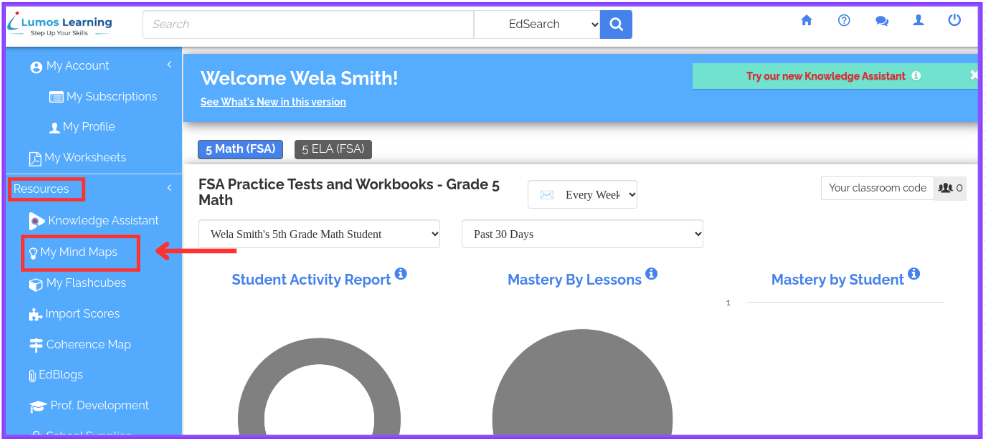
Step 1 (For Students) : On your student dashboard, click on the “Profile” icon on the top right corner of your screen and select “Mind Maps” from the available options.
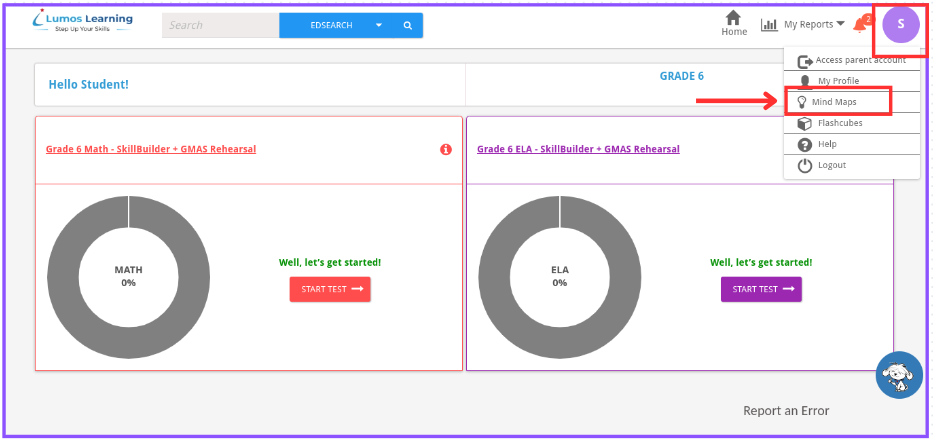
Step 2 : Now click on “Create New Mind Map” to get started.
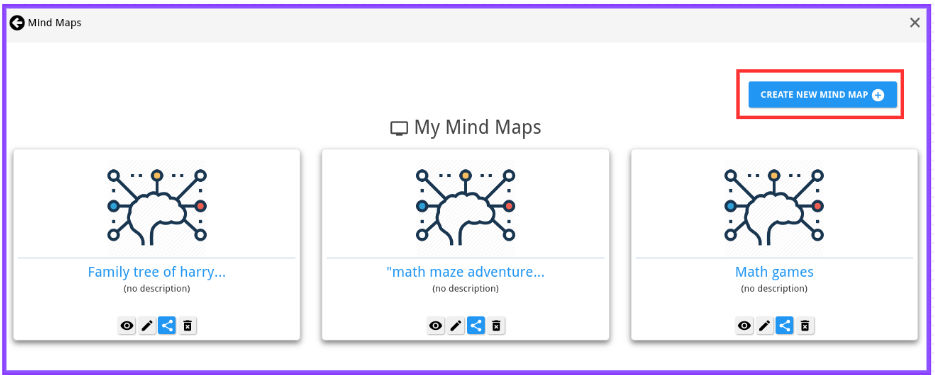
Step 3 : To create a mind map using AI autogeneration select either “Create using Topics” or “Create using own text”. To create a mind map from scratch manually select “Create from the ground up”.
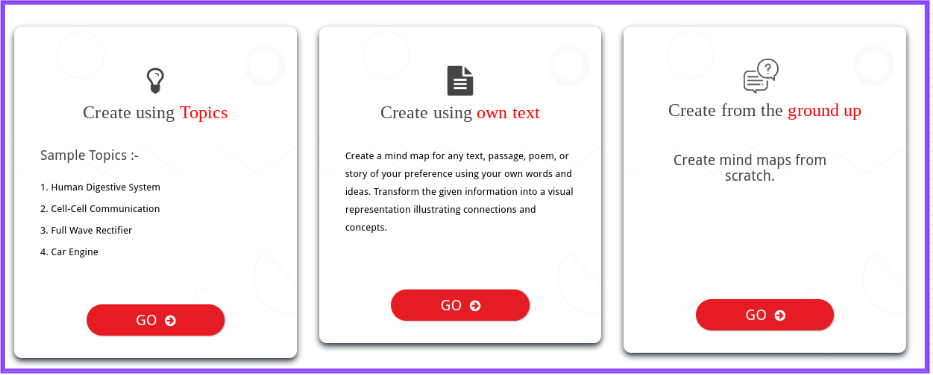
Step 4: To autogenerate a mind map using topics click on “GO” under Create using Topic.
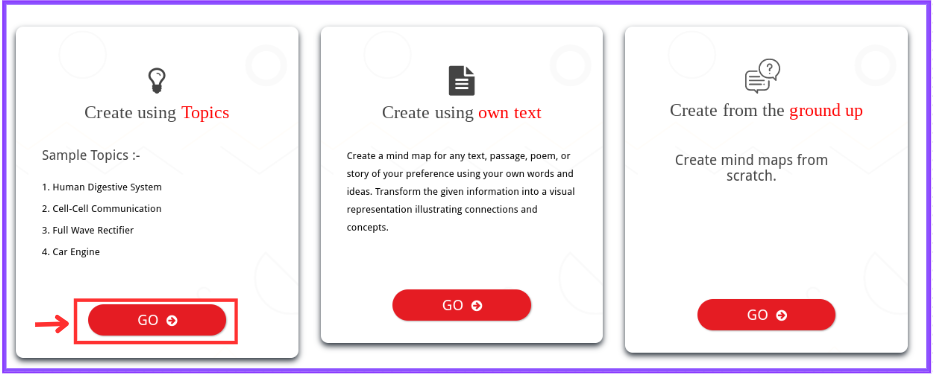
Step 5: Type or paste your topic in the provided text space and then click on “Generate.”
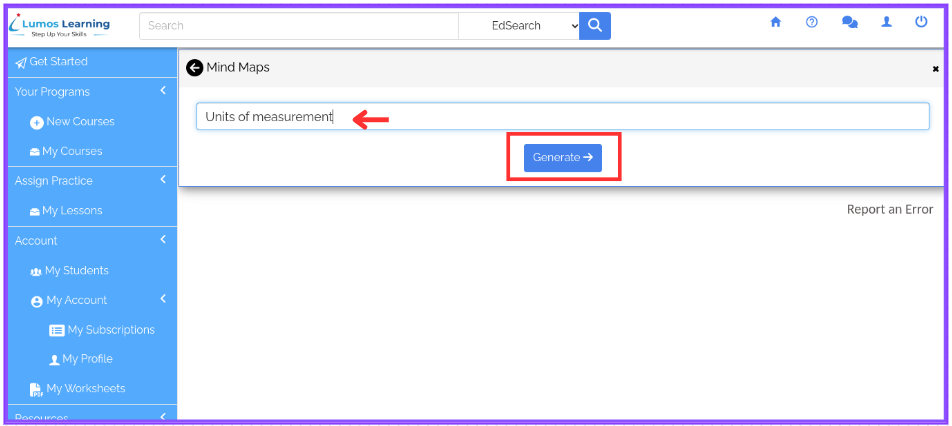
Step 6: After filling in a topic and clicking
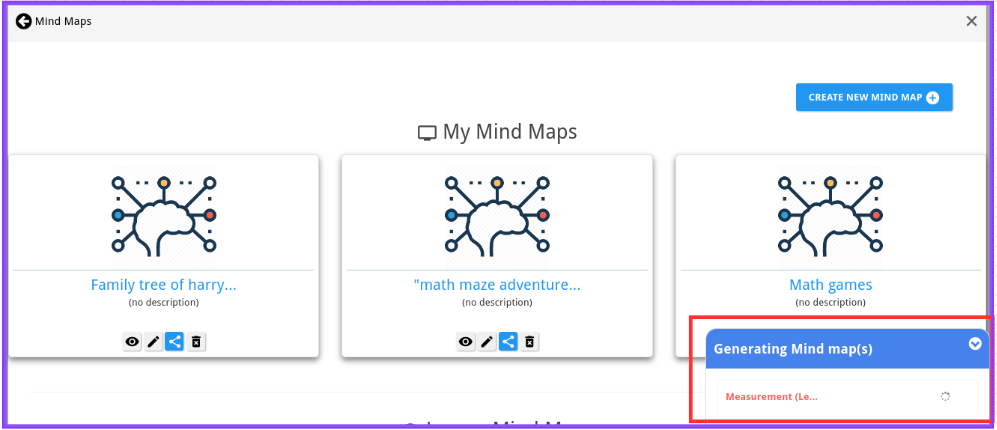
Step 7: An illustrated mind map will be created based on the provided topic, which can be edited easily according to your needs and requirements.
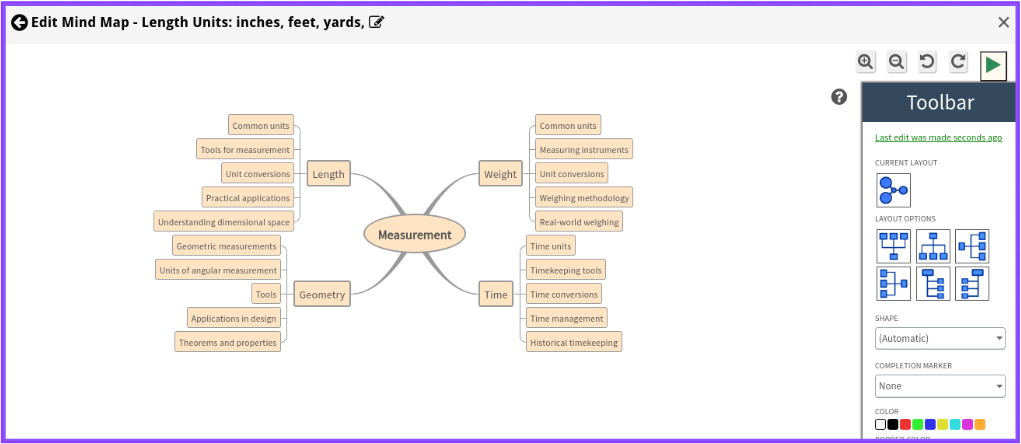
Step 8: To autogenerate a mind map using your prompt text click on “GO” under “Create using own text”.
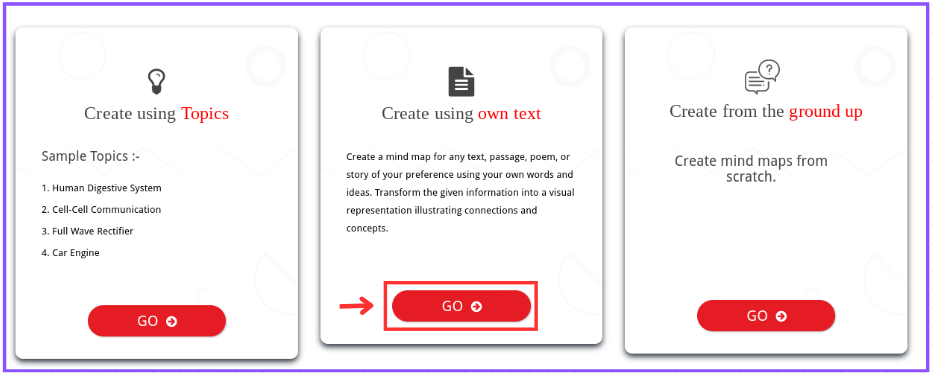
Step 9: Create a mind map for any text, passage, poem, or story of your preference using your own words and ideas. Insert your text in the space provided.
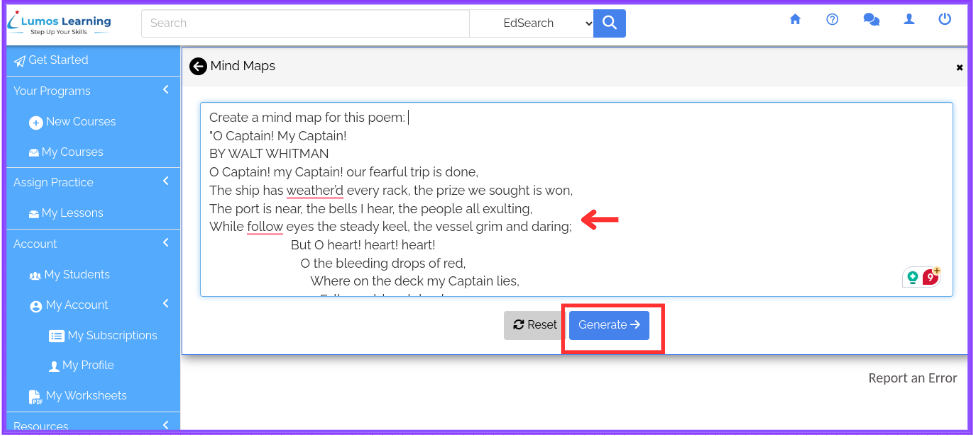
Step 10: After providing your text prompt and clicking on “Generate”, the system will take around 2-3 mins to autogenerate the mindmap based on the provided information.
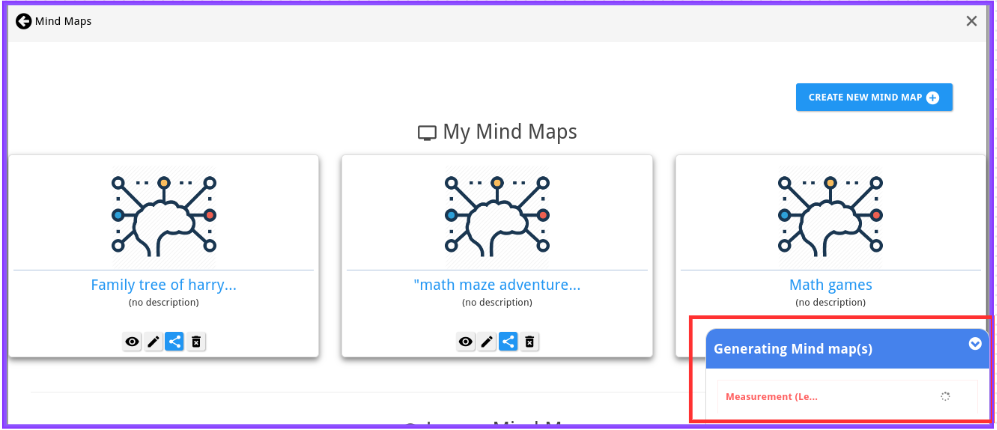
Step 11: An illustrated mind map will be created based on the provided poem, story, or any other text, which can be edited easily according to your needs and requirements.
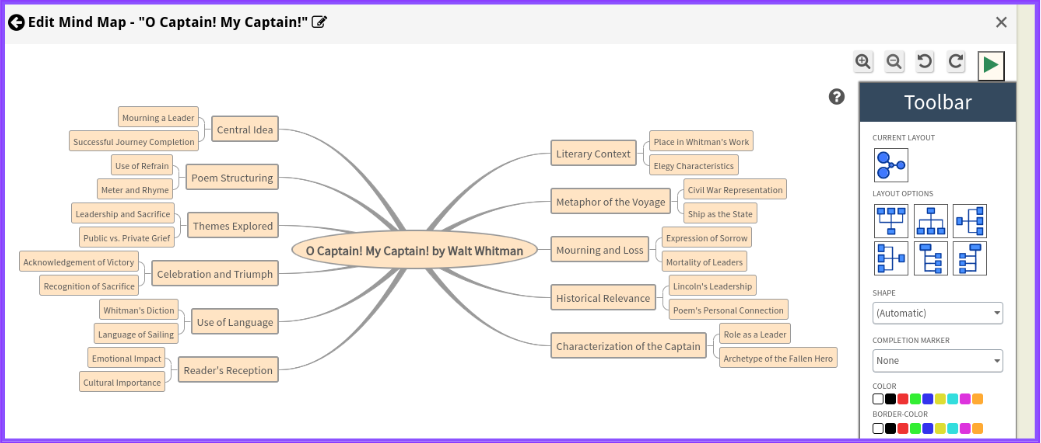
How to share mind maps:
Once you have successfully created your mind map you have the option to share it either with your peers or with your students.
Step 1: Click on the “Share” icon under your created mind map present on the “My Mind Maps” screen.
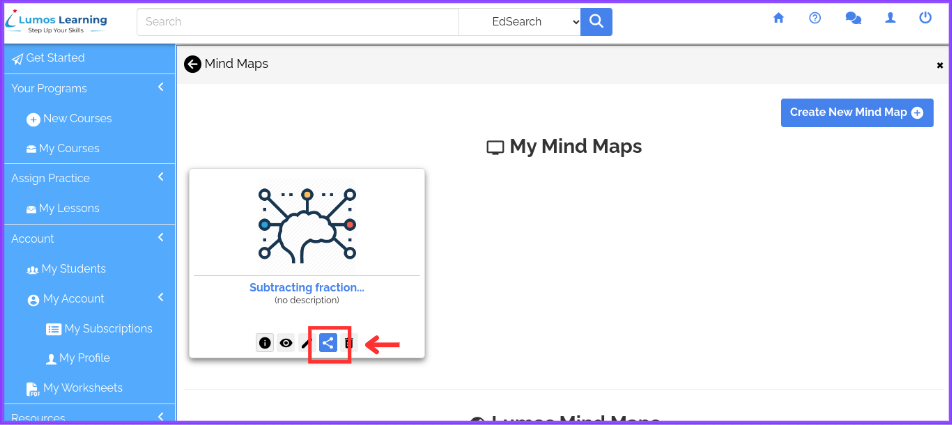
Step 2: Select the list from the available options – Teacher(s) list, Admin(s) list, and Student(s) list, then select the individuals you want to share your mind map with and give them “View” or “Edit” permission access.
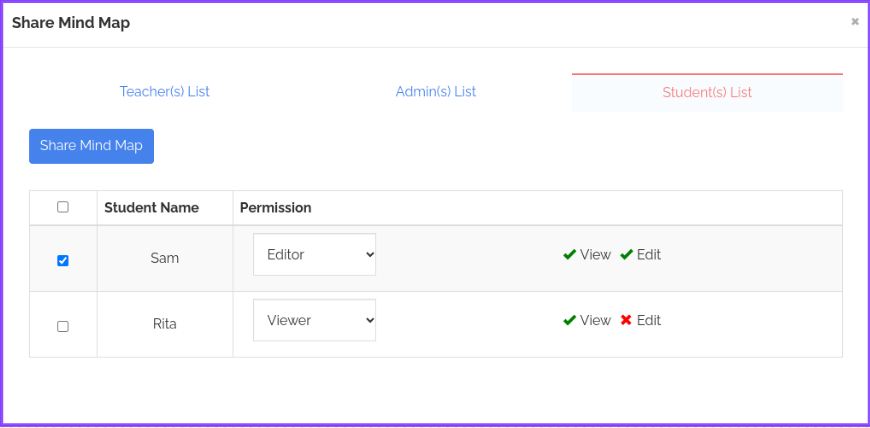
Step 3: The selected teachers, admins, or students will then be able to view/edit the mind map based on the given permissions from their respective login accounts under the “Shared Mind Maps” section.
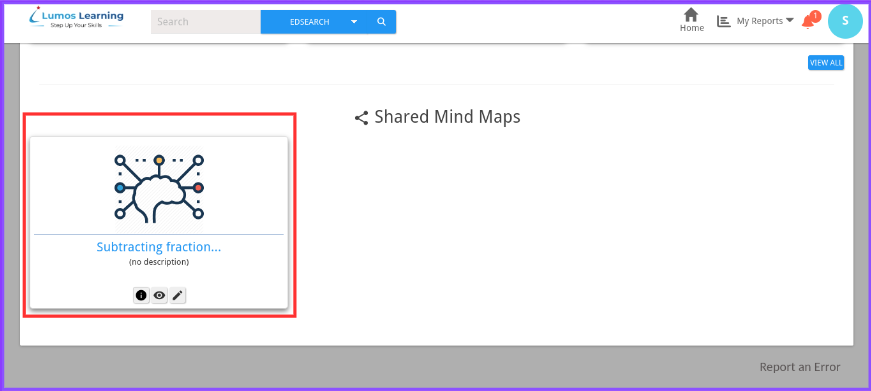
How to integrate mind maps into classroom learning?
Integrating mind maps into classroom learning involves several steps:
- Introduce mind mapping: Begin by introducing students to the concept of mind mapping and its benefits in aiding comprehension and memory retention.
- Provide examples: Show students examples of visually appealing mind maps to inspire creativity and engagement.
- Hands-on creation: Allocate time for students to create their own mind maps during lessons or as part of homework assignments, encouraging them to utilize autogeneration features to streamline the process.
- Peer collaboration: Facilitate peer collaboration by encouraging students to share and discuss their mind maps with classmates, promoting collaborative learning and communication skills.
- Assessment and feedback: Incorporate mind maps into assessment tasks to evaluate students’ comprehension and synthesis of information, providing constructive feedback to guide improvement.
Conclusion:
As educators, our mission extends beyond the classroom walls; we aim to empower students with the skills they need to thrive in an ever-evolving world. Illustrated mind maps offer a dynamic tool to facilitate deeper understanding, foster creativity, and promote critical thinking skills.
By embracing mind maps in our teaching practices, we not only enhance student engagement but also instill a lifelong love for learning. Let’s harness the power of mind maps to spark curiosity, foster collaboration, and inspire a culture of continuous exploration.
Take the first step towards transforming your classroom with mind maps.
